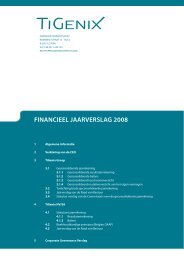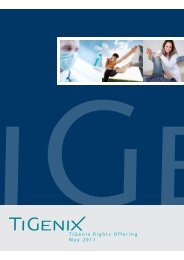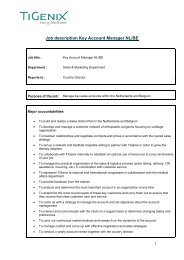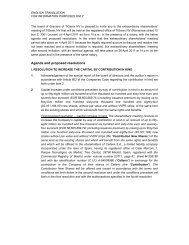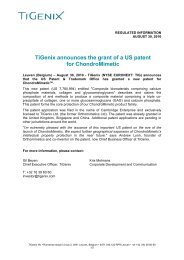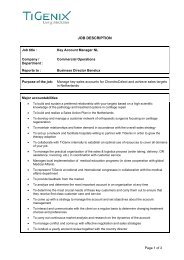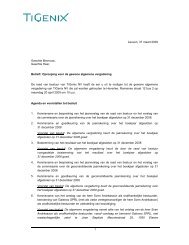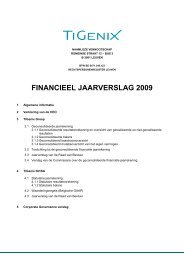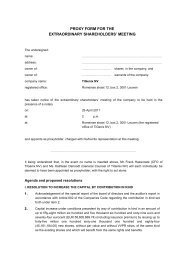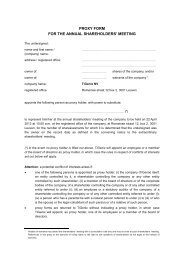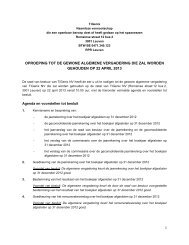ANNUAL REPORT 2012 - TiGenix
ANNUAL REPORT 2012 - TiGenix
ANNUAL REPORT 2012 - TiGenix
Create successful ePaper yourself
Turn your PDF publications into a flip-book with our unique Google optimized e-Paper software.
Deferred tax assets and liabilities are measured<br />
based on the expected manner of realisation<br />
or settlement of assets and liabilities, using tax<br />
rates that have been enacted or substantively<br />
enacted at the balance sheet date.<br />
11.5.2.18. Financial liabilities<br />
Financial liabilities measured at amortized<br />
cost, including borrowings, are initially<br />
measured at fair value, net of transaction<br />
costs. They are subsequently measured at<br />
amortized cost using the effective interest<br />
method, with interest expense recognized on<br />
an effective yield basis.<br />
The effective interest method is a method of<br />
calculating the amortized cost of a financial<br />
liability and of allocating interest expense<br />
over the relevant period. The effective<br />
interest rate is the rate that exactly discounts<br />
estimated future cash payments through<br />
the expected life of the financial liability, or,<br />
where appropriate, a shorter period, to the<br />
net carrying amount on initial recognition.<br />
The Group’s financial liabilities measured at<br />
amortized cost comprise long-term financial<br />
debt, other non-current liabilities, short-term<br />
financial debt and trade and other payables.<br />
11.5.2.19. Trade payables<br />
Trade payables are not interest bearing and<br />
are stated at their nominal value.<br />
11.5.2.21. Employee benefits<br />
The Group offers a pension scheme with<br />
different premiums depending on job level.<br />
The scheme is generally funded through<br />
payments to the insurance company. The<br />
major part of the pension obligations are<br />
defined contribution plans. A defined<br />
contribution plan is a pension plan under<br />
which the group pays fixed contributions ( %<br />
of annual gross salary). The group has legal<br />
obligations to pay further contributions if<br />
the fund does not hold sufficient assets to<br />
pay all employees the benefits relating to<br />
employees in service. The contributions are<br />
recognized as employee benefit expense<br />
when they are due.<br />
11.5.2.22. Share-based compensation plans<br />
for personnel<br />
The Company has offered equity-settled<br />
share-based payments to employees,<br />
directors and business associates. These<br />
share-based payments are measured at the<br />
fair value of the equity instruments at the<br />
grant date.<br />
The fair value determined at the grant<br />
date of the equity-settled share-based<br />
payments is expensed on a straight-line<br />
basis over the vesting period, based on the<br />
Group’s estimate of equity instruments that<br />
will eventually vest, with a corresponding<br />
increase in equity.<br />
11.5.2.20. Equity instruments<br />
Equity instruments issued by the Company<br />
are recorded in the amount of the proceeds<br />
received, net of direct issue costs.<br />
The estimate of the number of compensation<br />
plans which will be vested is revised at<br />
each reporting date. The change in<br />
estimates will be recorded as expense with<br />
a corresponding correction in equity. At the<br />
moment of exercise of the compensation<br />
plans no adjustments will be made into the<br />
share-based compensation reserve.<br />
119



